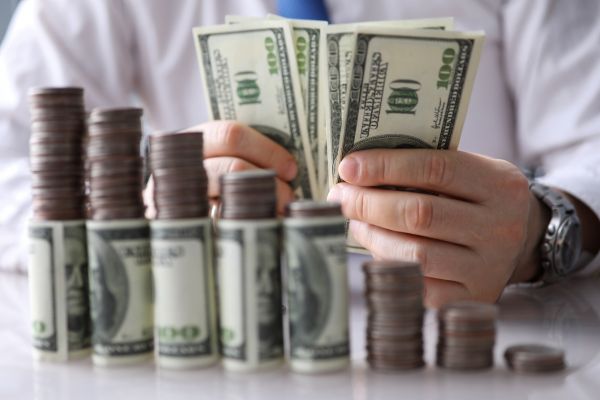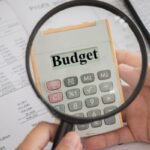In a world where financial uncertainties are increasingly common, knowing how to build an emergency fund has become more essential than ever. Whether it’s an unexpected medical bill, job loss, or an urgent home repair, life has a way of throwing curveballs when we least expect them. An emergency fund acts as a financial cushion, offering peace of mind and stability during such turbulent times. Building this safety net doesn’t happen overnight, but with discipline, strategy, and consistent effort, anyone can create one. If you’ve ever wondered where to start, this comprehensive guide will walk you through everything you need to know about how to build an emergency fund the right way.
Understanding the Importance of an Emergency Fund
Before diving into the how, it’s crucial to understand why an emergency fund matters. Financial emergencies don’t schedule appointments. When they arrive, they often come with emotional and financial stress. Without a dedicated fund, many people turn to credit cards or loans, which can spiral into long-term debt. An emergency fund empowers you to handle unforeseen costs without derailing your financial goals or compromising your lifestyle. It brings control and clarity during chaos and ensures that one unexpected event doesn’t turn into a financial disaster.
Setting a Realistic Goal for Your Emergency Fund
Learning how to build an emergency fund starts with setting a target. The ideal size of your fund depends on your individual circumstances. Most financial experts suggest saving between three to six months’ worth of essential living expenses. This should include costs like rent or mortgage, utilities, groceries, insurance, and transportation. If you’re a freelancer or someone with an unpredictable income, a larger fund might be necessary. On the other hand, if you have a stable job with additional financial safety nets, a smaller amount may suffice. The key is to determine what would give you enough coverage to feel secure during a financial emergency.
Opening a Separate Savings Account
Once you’ve decided on your goal, the next step is to choose where to keep your emergency fund. Keeping it in your regular checking account can lead to unintentional spending. To maintain discipline, it’s wise to open a separate high-yield savings account that’s easily accessible but not too tempting to dip into. This account should offer liquidity without penalties for withdrawals. Keeping it separate reinforces the idea that this money is reserved exclusively for genuine emergencies, not for impulse purchases or non-urgent needs.
Starting Small and Building Consistently
Many people feel overwhelmed by the idea of saving several months’ worth of expenses. However, the journey of how to build an emergency fund doesn’t require large sums at once. What matters more is consistency. Start by allocating a manageable amount from each paycheck. Even small contributions can add up over time. As your income grows or your financial situation improves, you can increase the amount you save. Remember, every dollar saved today reduces stress tomorrow. The act of regularly contributing reinforces a habit of financial responsibility.
Automating Your Savings for Long-Term Success
To ensure you stay committed to your goal, consider automating your savings. Set up automatic transfers from your checking account to your emergency fund every payday. This strategy removes the burden of remembering to save and eliminates the temptation to spend first. Treat your emergency fund contribution like any other bill—it should be non-negotiable. Over time, automated savings will quietly and efficiently build the financial buffer you need.
Cutting Expenses to Boost Your Emergency Fund
Sometimes, building an emergency fund requires more than just saving leftovers. If you’re serious about learning how to build an emergency fund quickly, you may need to reassess your spending habits. Look for areas in your budget where you can cut back without sacrificing too much quality of life. Reducing non-essential expenses, canceling unused subscriptions, or cooking at home more often can free up funds to direct into your emergency savings. While this may require some short-term sacrifice, the long-term reward of financial security is worth it.
Generating Extra Income for Faster Progress
Another effective approach to building your emergency fund is to find ways to increase your income. This might involve taking on a side hustle, freelancing, selling items you no longer need, or monetizing a hobby. By directing any extra income straight into your emergency fund, you accelerate your savings timeline. The added benefit is that additional income can also reduce your reliance on credit or loans during tough times, keeping you financially independent and in control.
Resisting the Urge to Use the Fund Prematurely
One of the biggest challenges when learning how to build an emergency fund is resisting the temptation to use it for non-emergencies. It’s important to define what constitutes a true emergency. Vacations, holiday gifts, or impulse purchases should not be funded from this account. The purpose of this fund is to provide financial stability during unexpected crises. Being disciplined about how and when to use your emergency savings ensures that the fund is available when you genuinely need it most.
Replenishing Your Fund After Use
Even after you’ve successfully built your emergency fund, the journey doesn’t end there. If you ever need to use it, it’s vital to have a plan in place to replenish it as soon as possible. Return to your initial savings strategy, revisit your budget, and resume automated contributions. Think of it as recharging a safety net—because the next emergency could come when you least expect it. Keeping your emergency fund fully stocked helps maintain your financial resilience over the long term.
Maintaining and Adjusting Your Fund Over Time
As your life changes, so should your emergency fund. Major life events such as marriage, having children, moving to a new city, or switching careers can alter your monthly expenses. It’s important to periodically reassess your emergency fund target to ensure it still aligns with your financial reality. Adjust the size of the fund accordingly and update your savings plan to reflect those changes. Staying proactive helps you remain prepared for both the expected and the unexpected.
Conclusion: Building Financial Peace of Mind
Mastering how to build an emergency fund is one of the most empowering steps you can take toward financial freedom. It’s not about how much you make, but how well you prepare for the unexpected. An emergency fund shields you from life’s financial surprises, reduces stress, and gives you the confidence to face challenges with a clear mind. By setting realistic goals, maintaining consistency, and staying disciplined, you’ll create a financial buffer that supports not just your bank account but your overall well-being. Start today, because the best time to prepare for a rainy day is before the storm begins.





